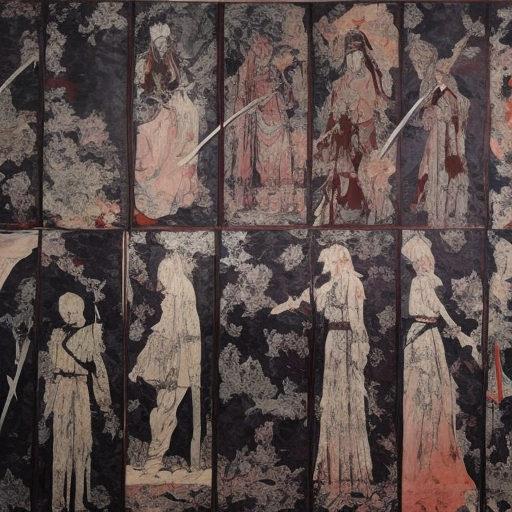One-line Summary:
Seven Samurai is a 1954 Japanese epic film directed by Akira Kurosawa. Set in 16th century Japan, the movie follows a group of seven samurai who are hired to protect a village from bandits.
Main Cast and Crew:
- Director: Akira Kurosawa
- Writer(s): Akira Kurosawa, Shinobu Hashimoto, Hideo Oguni
- Key Actors: Toshiro Mifune as Kikuchiyo, Takashi Shimura as Kambei Shimada, Yoshio Inaba as Gorobei Katayama, Seiji Miyaguchi as Kyuzo, Daisuke Katō as Shichiroji, Isao Kimura as Katsushiro Okamoto, Minoru Chiaki as Heihachi Hayashida
- Music Director: Fumio Hayasaka
- Director of Photography: Asakazu Nakai
- Producers: Sojiro Motoki, Sanezumi Fujimoto
Plot:
In feudal Japan, a small farming village is constantly attacked by a group of bandits. Desperate to protect themselves, the villagers decide to hire samurai warriors. They find Kambei Shimada, a wise and experienced samurai, who agrees to help. Kambei recruits six other samurai, each with their own unique skills and personalities.
The samurai train the villagers in combat and fortification techniques, preparing them for the bandits’ inevitable return. As the bond between the samurai and villagers grows, they face internal conflicts and doubts. Kikuchiyo, a samurai with a mysterious past, struggles to gain acceptance from his comrades. Katsushiro, a young samurai, falls in love with a village girl, complicating his dedication to the mission.
When the bandits finally attack, the samurai and villagers fight bravely, but suffer heavy losses. Despite the odds, they manage to repel the bandits. However, victory comes at a great cost. The surviving samurai mourn their fallen comrades, realizing the sacrifices made to protect the village.
Themes and Motifs:
Seven Samurai explores themes of honor, sacrifice, and the value of community. The film delves into the complexities of human nature, showcasing the struggles and growth of its characters. It highlights the contrast between the noble samurai and the ruthless bandits, questioning the true meaning of heroism.
Kurosawa masterfully uses visual motifs to convey the story’s themes. Rain is a recurring motif, symbolizing both cleansing and destruction. The film’s use of wide shots and dynamic action sequences showcases the power dynamics between the samurai and the bandits, emphasizing the epic scale of the conflict.
Reception and Legacy:
Upon its release, Seven Samurai received critical acclaim for its innovative storytelling, complex characters, and breathtaking action sequences. The film won the Silver Lion at the Venice Film Festival and was nominated for two Academy Awards.
The movie’s impact on cinema cannot be overstated. It influenced countless filmmakers around the world, shaping the action genre for years to come. Its themes and characters have been referenced and homaged in numerous films, including Hollywood classics like The Magnificent Seven.
Recommendation:
Seven Samurai is a cinematic masterpiece that continues to captivate audiences with its timeless storytelling and stunning visuals. It is a must-watch for fans of epic films, Japanese cinema, and anyone interested in exploring the depths of human nature.
Memorable Quote:
“In the end, I’m afraid we will have to fight.” – Kambei Shimada












